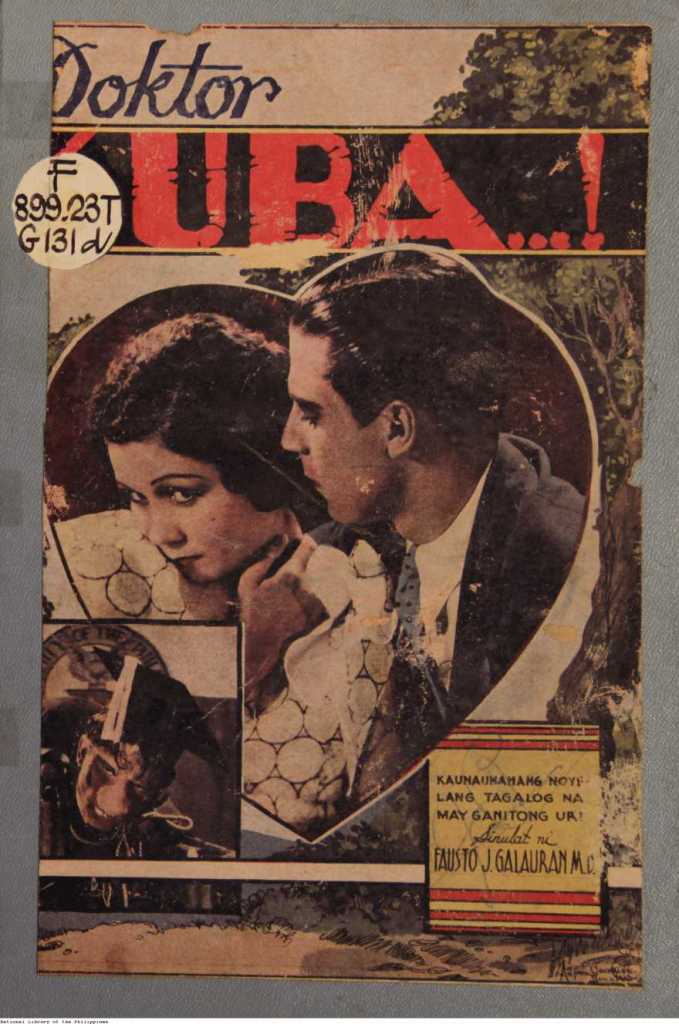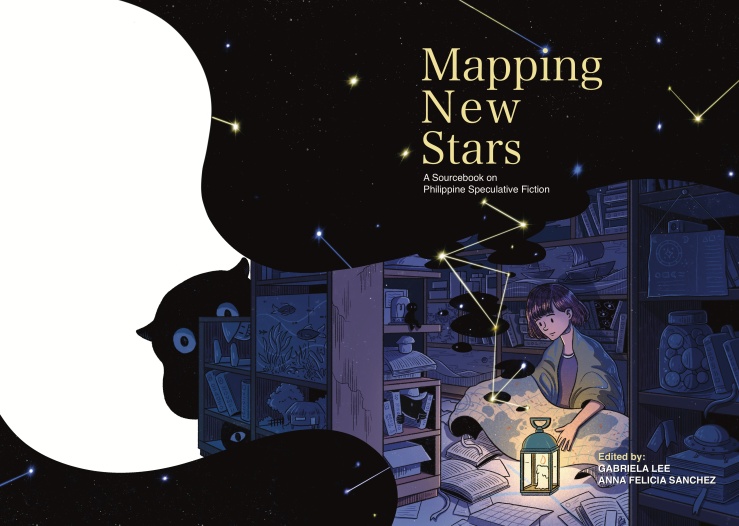As promised, here’s a teaser from my chapter of Mapping New Stars: A Sourcebook on Philippine Speculative Fiction (Editors: Gabriela Lee and Anna Felicia Sanchez, UP Press pre-publication) – This is the first-ever collection of non-fiction essays and think pieces about about Philippine Speculative Fiction, written by many authors, academics and critics who are active in the field. My research on “The Roots of Speculative Fiction in the Philippines” grew from my 2014 attempt at documenting the early days of local Science Fiction (check out my original post here). For this chapter, I tried to identify the earliest known Filipino works that could be reasonably argued as Fantasy, Horror, and of course, Science Fiction.
Here’s the introduction:

Stories of the fantastic have existed in the Philippine Islands for as long as there have been people to tell them. From the earliest folk tales born in the depths of pre-Hispanic history, to the forms of literature that were introduced and evolved during the colonial period, to the rise of modernism and post-colonial writing that arrived after the birth of the republic, “speculative” fiction that explores the human condition through the unreal or the otherworldly continues to thrive and to grow because it speaks to something deep within readers that cannot be addressed by realism.
Cover of Doktor Kuba by Fausto J. Galauran M.D. Manila: Limbagan Nina Ilagan at Sañga, 1933
Contemporary “Filipino speculative fiction” as a category and domain of cultural activity can be said to have properly begun only in 2005, with the arrival of its first deliberate and sustained platform – the Philippine Speculative Fiction anthology series (edited by Dean Francis and Nikki Alfar). But what about texts that were not explicitly labeled “speculative fiction” by their authors, or were published prior to the first Philippine Speculative Fiction (PSF)? Let’s take a look at how deep the roots of the literature of the fantastic have dug into our history. How far back they go may surprise you.
I. Defining Speculative Fiction in the Philippine Context
“Every enthusiasm aspires to respectability,” Science Fiction Grandmaster Isaac Asimov once said about his chosen field of writing, “and one way of getting it, is to demonstrate that it is old, even ancient.[1]”
He goes on to say that by broadening Science Fiction’s definition to encompass “the branch of literature that deals with the imaginative and the unfamiliar”, it could be induced that Science Fiction is as old as literature itself.
Although Asimov walks this back to a more narrow definition later, his initial, expansive definition of science fiction to include everything non-realist and fantastical is, in fact, one of the accepted historically located meanings for the term “speculative fiction”[2]. In this context, speculative fiction is defined as a supercategory of literature that includes fantasy, horror and science fiction, as well as their derivatives, hybrids, and cognate genres like the gothic, dystopia, weird fiction, post-apocalyptic fiction, ghost stories, superhero tales, alternate history, steampunk, slipstream, magic realism, fractured/subverted folktales, and all their related sub-genres. It encompasses, what fictionist and editor Dean Francis Alfar noted as “at its core, the literature of the fantastic[3]”.
Marek Oziewicz, the Marguerite Henry Professor of Children’s and Young Adult Literature at the University of Minnesota, said that a story falls under the realm of speculative fiction if it has “speculative fiction sensibilities” i.e. it contains speculative elements that are based on conjecture and do not exist in the real world. These non-realist stories can also be filed under one of the genres covered by the speculative fiction umbrella.
Excluded from our definition of speculative fiction are ethno-epics, tribal myths and legends, as well as traditional fairy and wonder tales which fall under the category of folktales. These are anonymously authored literary artifacts, passed primarily through oral narratives. Also excluded are children’s stories and juvenilia, which is a branch of literature on its own.
Philippine speculative fiction is simply the spectrum of all genre work in fantasy, horror and science fiction (as well as their sub-genres) united by a Philippine identity and a coherent Filipino aesthetic.
Prior to the arrival of the first volume of Philippine Speculative Fiction in 2005, the term “Philippine speculative fiction” didn’t exist. Realism was (and remains) the most popular literary mode. Any work that existed outside this scope was marginalized[4]. As both PSF founding editors, the Alfars, lamented in the introduction to the first volume of PSF:
“If you look for speculative fiction in the Philippines, you will be dismayed. Science Fiction and the literature of the fantastic are in very small numbers and are still looked down upon as inferior…”.
Yet despite this realist bias, there are many pre-PSF works of Filipino literature that demonstrate speculative sensibilities that can readily be classified under speculative fiction’s umbrella genres of fantasy, horror and science fiction.
[1] Asimov, Isaac, The Birth of Science In Fiction (New York: Knightsbridge, 1981), p 9
[2] Oziewicz, Marek, “Speculative Fiction”, Literature, Oxford Research Encyclopedia, 29 March 2017
[3] Alfar, Dean Francis, “Introduction”, Philippine Speculative Fiction Volume 2 (Pasig: Kestrel, 2006), p IX
[4] Alfar, Dean Francis, “An Introduction”, Philippine Speculative Fiction Volume 1 (Pasig: Kestrel, 2005), p vii

BTW, I’ve decided not to post my unedited original text for the Science Fiction section due to — reasons. Instead I will (eventually) post the intros to Fantasy, Horror and Science Fiction sub-sections, as well as the chapter intro you see here.
[…] entitled “The Roots of Speculative Fiction in the Philippines” (you can also read the intro here). For this section, I tried to identify the earliest known Filipino works that could be reasonably […]